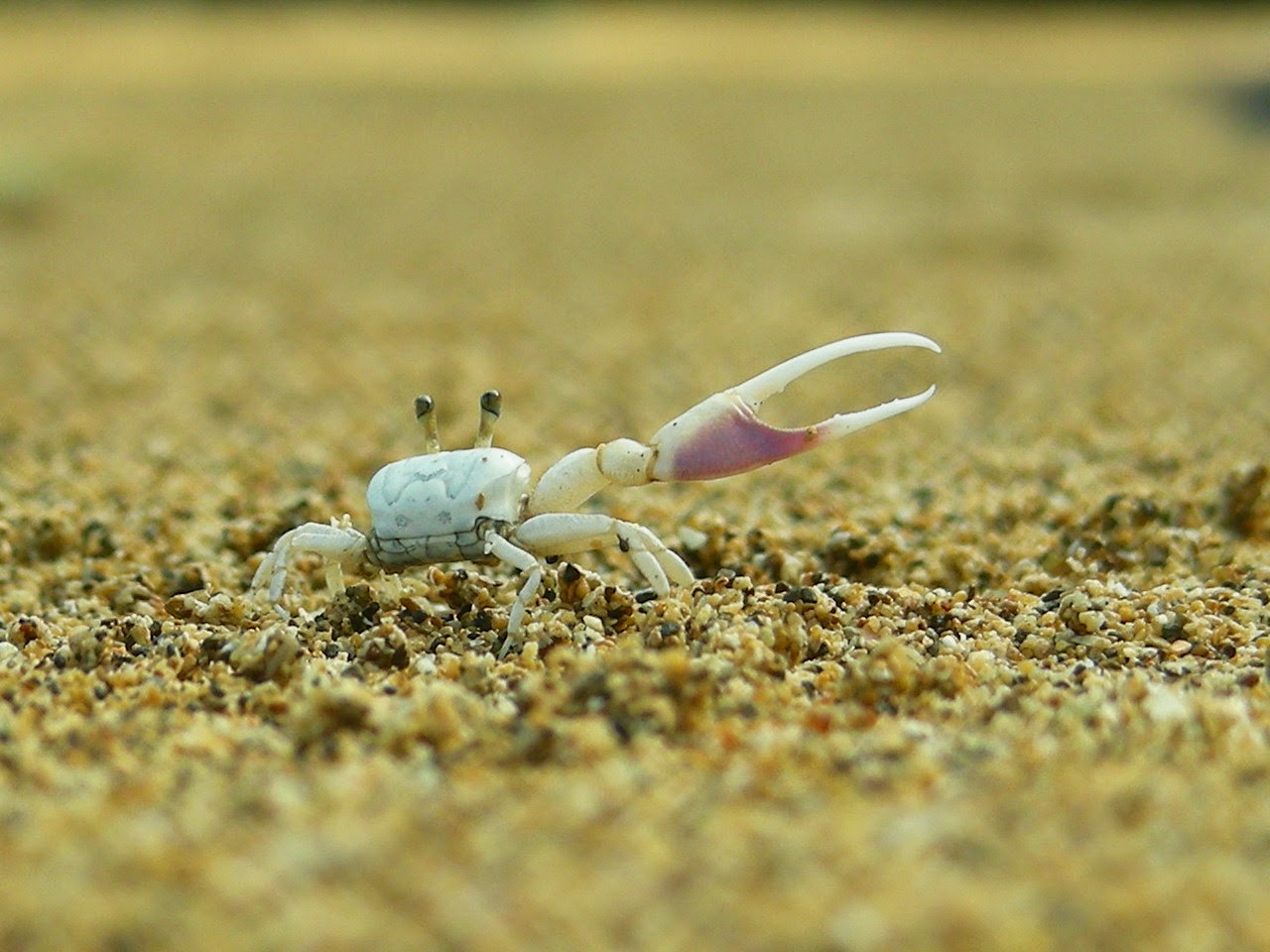Timing is everything, especially when it comes to
reproduction. Well-timed reproduction improves reproductive success. For
example, offspring that hatch when food is abundant or predators are scarce are
more likely to survive. However, changing environmental conditions may cause
organisms to miss the best time to reproduce. Since environmental variability
is ubiquitous on a wide range of spatial and temporal scales, the ability to
adjust to changing conditions can improve an organism’s chances of reproducing
“on time”.
 |
| Ovigerous Uca deichmanni female. Photo by Arthur Anker |
Most, though not all, of the ways that organisms
can maintain reproductive timing in response to temperature changes are
behavioural. For example, as changing climate is causing earlier springs, some
bird species are laying eggs earlier in the year so that their offspring still
hatch when their food is most abundant. Another possible response is to select
the location where the eggs will be laid and incubated based on temperature,
such as a relatively warmer location if temperature decreases before the eggs
are laid, or a cooler location if temperature increases. Some lizards and
spiders use this method of adjustment. For species that carry their eggs
throughout incubation or that can control the temperature of the incubation
site throughout development, there is the option of actively regulating the
temperature that the embryos experience. Some bird species actively maintain
the temperature of their nests. This is also probably a more common response in
egg-carrying invertebrates than has been documented thus far.
 |
| Uca terpsichores courting male. Photo by Kecia Kerr |
Surprisingly,
behavioural adjustments to environmental variability, and the diversity of
responses that species employ, remain underappreciated. However, over the last
few years there have been calls for increased attention to the potential importance
of plastic behavioural responses in mitigation of detrimental effects of environmental
variation (Kearney et al. 2009, Sih et al. 2010). While many species are already
being negatively affected by climate change, many others are likely able to diminish
the impacts, at least to some extent, via behavioural responses. Much more
research is needed to better understand how organisms respond to variable
environmental conditions and what impacts these responses may have on their
ecology.
Kearney M, Shine R, Porter WP (2009)
The Potential for Behavioral Thermoregulation to Buffer “cold-Blooded” Animals
Against Climate Warming. PNAS 106:3835–3840
Sih A, Stamps J, Yang LH, McElreath
R, Ramenofsky M (2010) Behavior as a key component of integrative biology in a
human-altered world. Integrative and Comparative Biology 50:934–944
